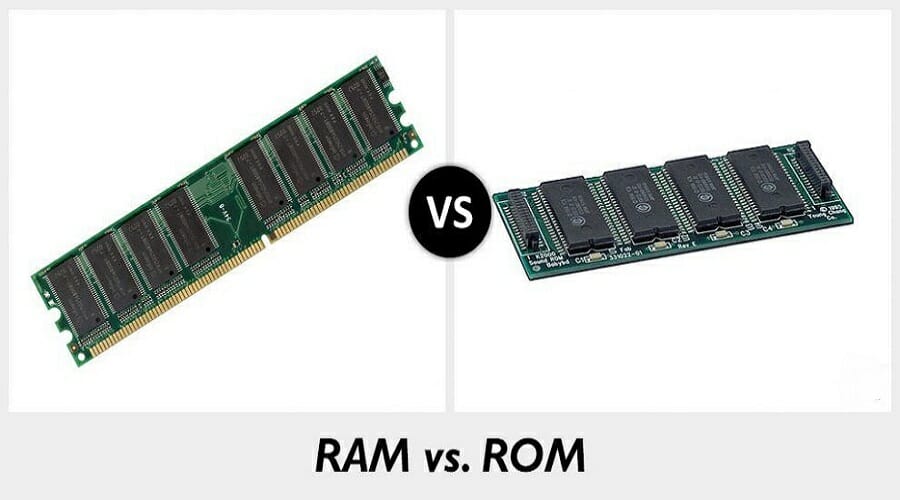 There are several places on a computer where we can store data. The hard disk is the main storage device used to store all the necessary data such as OS files, applications, music, videos, etc. Apart from the hard disk, we also have the Memory RAM, ROM etc. But what is the difference between RAM and ROM?
There are several places on a computer where we can store data. The hard disk is the main storage device used to store all the necessary data such as OS files, applications, music, videos, etc. Apart from the hard disk, we also have the Memory RAM, ROM etc. But what is the difference between RAM and ROM?
What is RAM (Random Access Memory)?
After the hard disk or SSD, RAM is the largest storage medium present in computer hardware. RAM is used to store programs and data used by the CPU in real time. Data in RAM can be read, written and deleted as many times as desired.
RAM is a "volatile memory" which means that the data stored there disappears the moment the power supply is cut off. This is one of the reasons why we cannot use RAM for permanent storage, despite the fact that it is much faster than traditional hard disks.
All modern operating systems we use have built-in ways of dealing with RAM volatility. All operations that are performed are continuously stored on the hard disk to avoid situations where an unexpected system shutdown would lead to data loss.
Types of RAM memory
SRAM (Static RAM): It stores every bit of data using a memory cell with six transistors. SRAM is much faster than DRAM but more expensive.
DRAM (Dynamic RAM): It stores every bit of data using a pair of transistors and capacitor, which form a DRAM memory cell
What is ROM (Read-Only Memory)?
Another notable type of memory present in the computer is ROM. As the name suggests, the data in memory can only be read by the computer. So what is the reason for using this memory?
ROM is a non-volatile memory. It does not lose its data even if the power is removed. ROM is used to store the firmware for hardware that gets almost no updates, for example the BIOS.
The data in the traditional ROM format is bound to the ROM, i.e. past at the time of construction. Over time, this memory has been developed to support data erasure and rewriting, although it cannot achieve the level of performance of a RAM chip.
Types of ROM
Mask ROM: In this type of ROM the data is written during the construction of the memory chip.
PROM (Programmable Read-only Memory): Data is written after the memory chip is created. It is non-volatile.
EPROM (Erasable Programmable Read-only Memory): Data from this non-volatile memory chip can be erased by exposing it to high-intensity UV radiation.
EEPROM (Electrically Erasable Programmable Read-only Memory): Data from this non-volatile memory chip can be electrically erased using electron emissions (Fowler-Nordheim tunneling). Modern EEPROM modules are quite efficient in terms of read and write capabilities.
Optical storage media such as CD-ROM is also a read-only form of memory.
RAM vs ROM: What is the difference between RAM and ROM?

Both memories have their advantages and disadvantages. ROM is cheap and can hold data permanently but it has its limitations. On the other hand, RAM is quite useful but costs more.
ROM is more useful than you think. The Flash memory found in removable storage media such as SSDs, USB drives, SD cards, etc., is an advanced implementation of the EEPROM type of memory. The derivative provides a faster storage solution than traditional hard drives.
